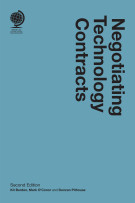
The UNCITRAL Model Law on Cross-Border Insolvency 1997 (the “Model Law”) has now reached the ripe old age of 20. It forms part of an international insolvency continuum that has seen, in the past few decades, the production of the Istanbul Convention 1990, the European Insolvency Convention 1995 and the European Insolvency Regulation 2000 (recently “recast” in 2015). Unlike some other texts in this field, the Model Law itself is a relatively brief document covering four key areas: scope, rules for access, the effects of domestic recognition and, perhaps the most important, rules for co-operation and coordination of simultaneous proceedings. Since the Model Law first appeared, it has gained adherents at a steady pace, with major commercial jurisdictions being represented among the number, a factor that has stimulated its take up by developing and emerging states, a process also encouraged by the international institutions that have added adoption of the Model Law to the list of recommended reforms to domestic insolvency law. The latest adherent, Singapore, adopted the Model Law earlier this year, adding to the grand total of 45 jurisdictions now using the text.
This is the fourth edition of the work, which covers the changes needing to be taken on board occurring in the five years elapsing since the third edition appeared, including the coverage of new adherents to the Model Law, the voluminous case law which has accompanied the use of the text in existing adopters as well as the production by UNCITRAL of a Revised Guide to Enactment and Interpretation in 2013 intended to support states wishing to adopt the Model Law. This edition, as with the previous ones, begins with a preface and overview serving to highlight some of the background to the Model Law itself and some of the issues that have characterised the adoption of the Model Law in the jurisdictions under review. The text then follows with 21 country chapters covering nearly all of its adopters.
In each chapter, the authors contributing to this edited work, mostly drawn from the practising world with input from one or two academics, recount the process of adoption and implementation of the Model Law, detail the domestic provisions that give force to its text, including any omissions of or variations from its stipulations or practice in relation to this experienced elsewhere. They also chart any further domestic provisions that may have a bearing on the operations of the Model Law and describe any limitations to its use within the domestic context. Many of the chapters are straightforward accounts of the domestic adopting provisions with any case law fleshing out its operations being cited. In some jurisdictions, where cross-border insolvency law is still in its infancy, a recent adoption often means that there is little guidance on how the Model Law’s provisions will be interpreted by the courts. In some others though, especially in the case of the United States, extensive references are included to the volume of case law that has been generated under the text and some of the more illustrative cases are analysed in some detail.
The text overall is easy to read. Key concepts are addressed in a clear and consistent fashion, given the common arrangement of the chapters. The information in the footnotes, where included, is also very useful by providing references to other relevant material. The chapters contain much detailed information, some presented in tabular form, while the text overall is completed by tables of cases, domestic legislation, European provisions and other treaties/conventions as well as Model Law provisions, all cross-referenced to the text. In the second volume, into which this work has for the first time been divided, there are two appendices containing the Model Law and both versions of the accompanying Guide to Enactment (original and revised), given the continuing authoritative status of the first of these, as well as an extensive index.
In summary, this is an invaluable reference text on how the Model Law has thus far been adopted. It serves as a useful aidemémoire to the status of the text in the jurisdictions covered and is thus of great utility to a range of potential users. For these and many other reasons, the work can only be recommended as an essential component of a cross-border insolvency library.
,





